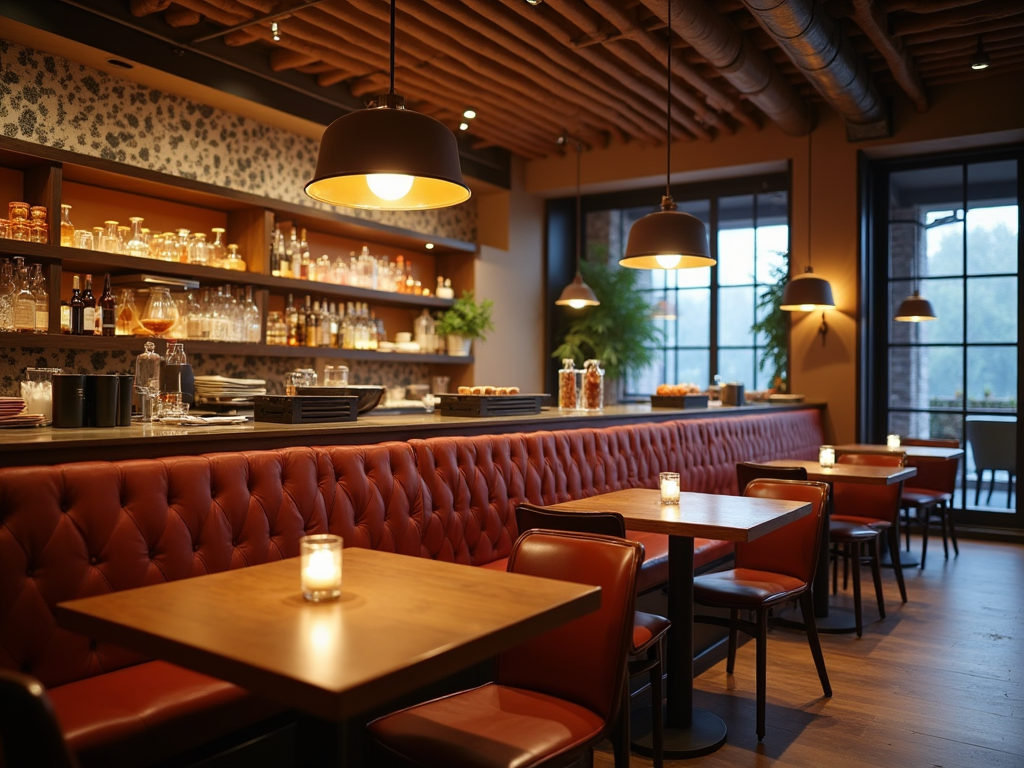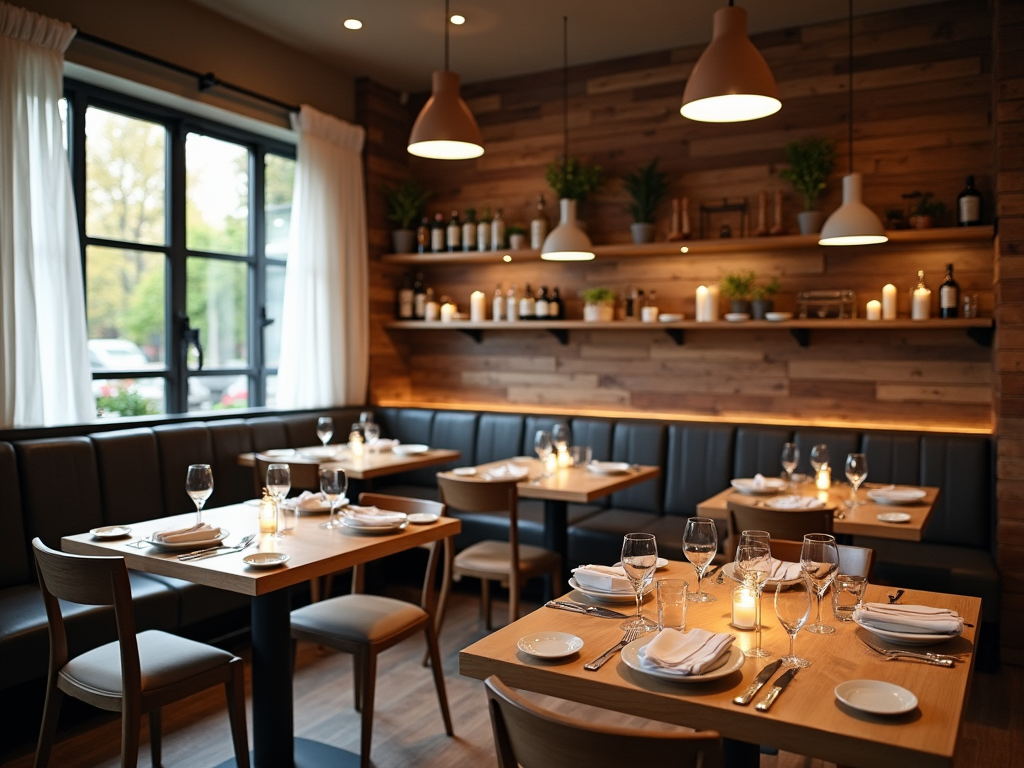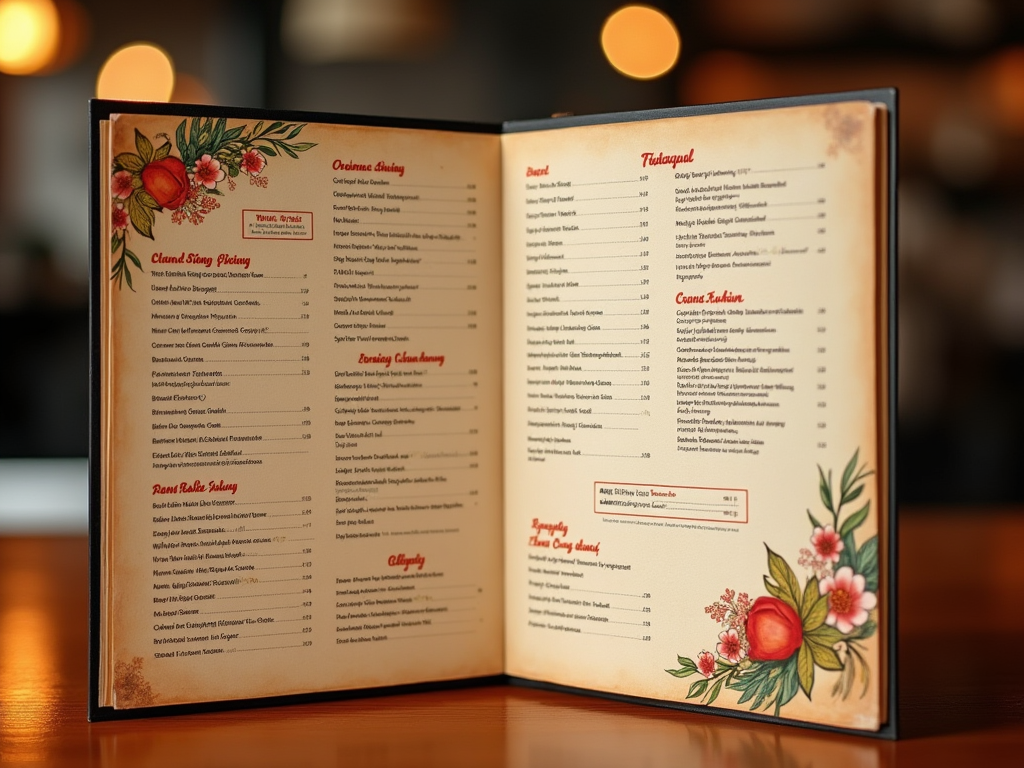Did you know that nearly 60% of new restaurants fail within the first year? Having a well-structured business plan from the start of your operations is essential to avoid this fate since you plan everything to manage potential risks. In this article, we will cover the essential elements of a restaurant business plan, including how to define your concept, analyze the market, create a marketing strategy, and project financial outcomes.
The restaurant industry offers exciting opportunities for entrepreneurs passionate about food and hospitality. With a solid plan, clear goals, and an understanding of market dynamics, you can build a successful business that appeals to investors and customers alike.
FAQ
What is the business plan of a restaurant?
Can owning a restaurant be profitable?
How do I write a small food business plan?
What is the most important thing to open a restaurant?
What is a business plan?
A business plan is a written document that defines the goals and strategies of a business. It is like a roadmap, guiding you through the steps needed to grow and succeed. For a restaurant, it outlines details like types of food, target customers, and plans to attract them.
A business plan usually includes some key sections:
- Executive summary: A brief overview of your restaurant’s concept and goals.
- Company description: Background information and mission of the restaurant.
- Market analysis: Insights into industry trends and competitors.
- Marketing plan: Strategies for reaching your target audience.
- Financial plan: Projections for revenue, expenses, and profitability.
The purpose of a business plan is to help you organize your ideas and prepare for challenges. It can also be used to attract investors or secure loans. Writing a business plan helps you think critically and with a cool head about the steps needed for success.
Writing a well-organized plan takes time and effort but offers valuable insights. It ensures that you have a clear strategy, making informed decisions easier as you start and run your restaurant.
Writing a restaurant business plan
Starting a restaurant requires a solid business plan. A clear plan guides your decisions and helps secure investors. Your business plan should be focused on what investors and stakeholders need to know. Here is what to include and how to write the perfect restaurant business plan.
Executive summary
The executive summary is an important part of your restaurant business plan. It gives readers a clear, quick overview of your restaurant concept, goals, and market opportunity. Important elements to include are:
- Restaurant concept: Describe what makes your restaurant unique. Highlight the theme, cuisine, and atmosphere.
- Management team: Introduce your team. Explain their roles and experience in the restaurant industry.
- Financial projections: Provide a brief look at your financial plans. Focus on expected revenue, costs, and profitability.
- Mission statement: Share the mission of your restaurant. This should align with your overall vision.
- Company overview: Summarize the business structure, location, and any key operational plans.
The executive summary should be brief, around one to two pages. Use clear and straightforward language, avoiding complex terms. The goal is to engage the reader and make them want to continue reading the full business plan.
Company description
A strong company description should outline the mission statement and give a clear company overview. These elements define your restaurant’s purpose and its position within the industry.
Mission statement
Your mission statement should clearly state the restaurant’s primary goals and values. This short yet powerful statement sets the tone for your business decisions and strategies.
When crafting your mission statement, think about what makes your restaurant special. Highlight your commitment to quality, customer service, and any unique selling points. A well-defined mission should inspire your team and appeal to potential investors or partners.
Company overview
The company overview provides a snapshot of your restaurant’s basic details and operational plans. Describe the type of restaurant you operate, such as a bistro, fast food, or fine dining establishment. Include information on your location, target market, and cuisine offered.
Detail your business model, such as dine-in, takeout, or delivery. Discuss any distinctive features or unique selling points that set your restaurant apart in the market. Mention key aspects of the industry you’re entering and how your restaurant fits within that context.
Restaurant concept
Creating a unique restaurant concept is essential to attracting and retaining customers. Think about the dining experience and menu offerings that would set your restaurant apart.
Dining experience
The dining experience involves more than just the food. Consider the atmosphere, decor, and service style that will match your restaurant’s overall concept. Do you envision a casual setting with quick service, or a high-end, formal environment? The choice affects your furnishings, lighting, and even the music.
Your dining experience should reflect the restaurant’s identity. For instance, a family-friendly atmosphere might include an open play area, while a romantic setting may focus on private tables and dim lighting. Consistency ensures that every visit feels cohesive and memorable to your guests.
Menu offerings
Menu offerings are central to your restaurant’s concept. A well-curated sample menu should showcase your culinary vision. Highlight unique offerings that differentiate your restaurant from local competitors. Include signature dishes that reflect your restaurant’s theme and identity.
Pay attention to menu design. An appealing layout can make it easier for guests to navigate and choose their meals. Group dishes logically and use descriptive words to make each item sound tempting. Your menu should offer a balanced variety, including vegetarian or gluten-free options, to appeal to a broad audience.
Market analysis
To make a strong restaurant business plan, you need a clear market analysis. This includes understanding your target market, keeping an eye on competitors, and recognizing industry trends. Focusing on these areas will help guide your decisions.
Target market
Your target market is the group of people you aim to attract. Identifying your target audience involves understanding demographics like age, income, and lifestyle.
For instance, many restaurants focus on millennials and young professionals. These groups often seek unique dining experiences and value convenience. They may also lean toward health-conscious choices and value sustainable practices.
Consider creating customer personas to represent your ideal guests. This can involve listing characteristics, dining preferences, and their reasons for eating out. With this, you can tailor your menu and marketing efforts to better connect with potential customers.
Competition analysis
Analyzing your competition is about knowing who your competitors are and what they offer. You should regularly visit these rival restaurants to explore their menu, customer service, and pricing.
Compile a list of your closest competitors and evaluate their strengths and weaknesses. This helps identify what makes them succeed or where they fall short. You might discover potential areas where you can stand out or avoid their mistakes.
Keep an eye on reviews and social media activity, as they provide insights into what customers value. This ongoing analysis allows you to adjust your strategies to stay competitive.
Industry trends
Staying informed about restaurant industry trends can help shape your strategy. Changes in dining habits, such as a rise in ghost kitchens or an emphasis on health, can influence your business model.
It’s wise to check reports from reliable sources and talk to experts or industry associations. Understanding current growth trends will shape your decisions and help you focus on developments that matter.
For instance, in recent years, many consumers have prioritized healthy eating options, which might require adapting your menu. Keeping up with these trends ensures your restaurant remains relevant and appealing to its audience.
Marketing plan
A successful marketing plan identifies specific actions and strategies tailored to your restaurant’s goals. Engaging your target market through digital and promotional strategies can increase visibility and customer loyalty.
Marketing strategy
Here is how you can create a marketing strategy in the simplest steps:
-
- Define your restaurant’s brand: Identify what makes your restaurant unique and stand out.
- Consider your values and experiences: Think about what you want your customers to feel and how it connects with your brand.
- Understand your target audience: Research demographics (age, location, income, etc.). Analyze customer preferences and behaviors (e.g., dining habits, favorite dishes).
- Set clear growth goals: Aim for specific, measurable objectives, such as increasing foot traffic by a percentage. Focus on boosting online reservations or other relevant goals.
- Develop a timeline: Plan out when you want to achieve each goal.
- Choose marketing channels: Select the most effective platforms, like social media, email, or print ads, to reach your audience.
- Establishing an online presence: Using platforms like 10Web to build a professional restaurant website can significantly enhance its visibility and accessibility. A well-designed website allows customers to easily view your menu, make reservations, and engage with your brand online.
Looking to sell online? Develop and launch your store with 10Web AI Ecommerce Website Builder.
Create your online store in minutes!
Operations plan
A well-structured operations plan is vital for the success of your restaurant. It covers the design and layout of your space, how you manage the supply of ingredients and materials, and the flow of activities in your kitchen.
Location and layout
Selecting the right location and planning the layout are key steps when starting a restaurant. You’ll want a spot with good visibility and access that aligns with your target market. Consider local foot traffic, parking availability, and nearby businesses.
The layout is equally important. A smart design maximizes space, enhances the dining experience, and ensures a smooth workflow for staff. Focus on the dining area, kitchen, and storage spaces to reduce congestion and increase efficiency. Include a clear plan for emergency exits and sanitation stations. Balance aesthetics with functionality to create a welcoming and practical environment.
Supply chain management
Efficient supply chain management keeps your restaurant running smoothly. You’ll need reliable suppliers who can provide fresh ingredients regularly. Develop relationships with local and regional vendors to diversify your sourcing and improve ingredient quality.
Inventory management is also key. Use technology to track stock levels and predict ordering needs. This minimizes waste and reduces costs. Plan for seasonal changes in supply and adjust menus accordingly. Implementing a first-in, first-out strategy helps maintain freshness and ensures older stock is used first.
Management and organization
When planning your restaurant’s management and organization, focus on building a competent leadership team and identifying staffing needs to ensure daily operations are smooth.
Management team
Your management team is vital for the success of your restaurant. Typically, this team includes a general manager, a kitchen manager, and a front-of-house manager. The general manager oversees all operations, making sure you’re meeting targets and providing excellent service.
The kitchen manager ensures the kitchen is running efficiently, focusing on food quality, inventory, and health standards. The front-of-house manager handles customer interactions, ensuring guests have a pleasant experience. Together, this team works to keep the restaurant operating effectively and meet your business goals.
Staffing requirements
Staffing your restaurant involves understanding the roles you’ll need, such as chefs, servers, hosts, and dishwashers. Each role is crucial for different reasons. Chefs and cooks are needed to prepare and cook the meals. Servers and hosts make sure customers are welcomed and well-attended.
It’s often useful to have a mix of full-time and part-time staff to cover different shifts throughout the day. Consider peak times and slow periods when deciding how many staff members you will need. Setting clear job expectations and providing training helps create a motivated and efficient team.
Financial plan
Creating a financial plan for your restaurant is essential in guiding your business toward success. This involves making clear projections, understanding profit margins, and maintaining adequate working capital.
Financial projections
Financial projections help you estimate future revenue, expenses, and profits for your restaurant. Start by identifying all potential sources of income, such as dine-in, takeout, and delivery. Use historical data, if available, and industry trends to forecast your sales. Be sure to include assumptions about pricing, customer growth, and seasonal changes.
Next, list all expected costs, like labor, ingredients, rent, and utilities. Subtract these expenses from the predicted revenue to calculate net profit. Regularly update projections to reflect changes in the business environment. This proactive approach helps manage cash flow and enables more informed decisions.
Profit margins
Understanding profit margins is important to gauge your restaurant’s financial health. Calculate your gross profit margin by subtracting the cost of goods sold (COGS) from total sales, then dividing the result by total sales. Gross Profit Margin = (Sales – COGS) / Sales. This shows how efficiently you turn ingredients into profit.
Analyze your net profit margin by deducting all operating expenses from total revenue, including wages and rent. A higher net profit margin indicates better overall financial performance. Monitoring both gross and net margins allows you to spot trends and vulnerabilities, enabling timely adjustments to pricing or operational practices.
Working capital
Working capital is the money needed for daily operations. It is calculated as current assets minus current liabilities. Working Capital = Current Assets – Current Liabilities. Maintaining positive working capital ensures you can pay bills, payroll, and supplier invoices without difficulty.
Effective cash management is key. Monitor cash flow to anticipate periods when additional working capital may be required, such as buying seasonal inventory or during slower business months. Keeping an eye on accounts receivable and payable helps maintain liquidity. Align your financial strategies with your business plan to ensure continued operation and growth.
Adjusting your financial plans based on performance reviews helps maintain a stable financial footing.
Conclusion
Starting a restaurant can be tough, but having a solid business plan can make a big difference. By clearly defining your restaurant’s idea, understanding your market, planning your marketing, and forecasting your finances, you create a strong foundation to handle the challenges that many new restaurants face. This careful planning helps you manage risks and makes your restaurant attractive to customers and investors.
A good business plan acts like a roadmap for your restaurant’s growth and helps you adapt to changes in the industry. It enables you to make smart decisions, run your operations smoothly, and keep your finances healthy, ensuring your restaurant can last and succeed. As you begin your business journey, remember that putting time and effort into your business plan now will greatly increase your chances of building a successful restaurant.
Looking to sell online? Develop and launch your store with 10Web AI Ecommerce Website Builder.
Create your online store in minutes!











